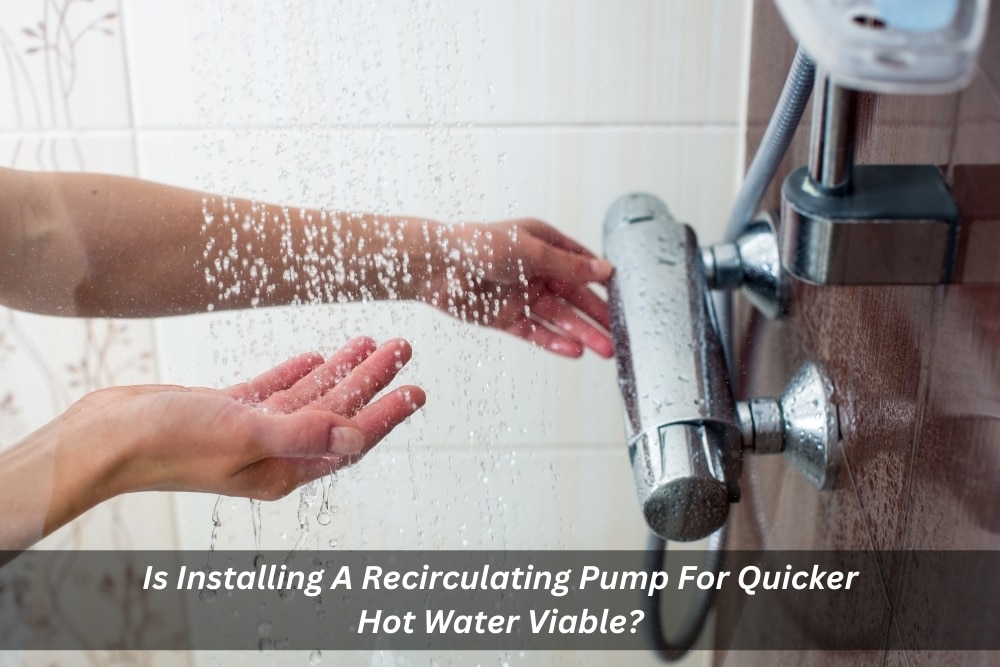Tired of waiting for ages for hot water to reach your faucet? Imagine turning on the tap and having instantly steamy water, no matter how far you are from the hot water heater. That’s the magic of a recirculating pump for hot water heater. But is it worth the investment? Let’s dive into the world of hot water circulation and see if it’s the right solution for you.
What is a recirculating pump?
Think of it as a personal assistant for your hot water. This nifty device continuously circulates hot water through a dedicated loop back to the heater, keeping the pipes warm and ready to deliver instant hot water at the tap. No more waiting, no more wasted water!
What are the benefits of a recirculating pump for hot water?
- Instant hot water: This is the biggest perk. No more cold showers or lukewarm dishwater. Enjoy hot water instantly, even in far-flung bathrooms or kitchens.
- Reduced water waste: Waiting for hot water means gallons down the drain. A recirculating pump eliminates this waste, saving you water and money on your bill.
- Improved efficiency: With hot water readily available, your heater doesn’t need to cycle on and off, potentially reducing energy consumption constantly.
- Comfort and convenience: Who doesn’t love the luxury of quick hot water? It’s a small upgrade that makes a big difference in daily comfort.
Are there any drawbacks to using a recirculating pump for hot water?
- Initial cost: Installing a recirculating pump involves upfront costs for the device and installation.
- Energy consumption: While it may improve your heater’s efficiency, the pump itself uses a small amount of electricity.
- Maintenance: Occasional maintenance might be needed, depending on the system.
- Not for every home: If your hot water heater is close to your faucets, a pump might not offer significant benefits.
It’s crucial to address any underlying issues before adding a recirculating pump. For example, if you suspect a leak in your electric water heater, understanding the potential causes through our blog ‘What are the main reasons for an electric water heater to leak?‘ can help you decide if repairs or further investigation are needed before proceeding with pump installation.
Making the decision: How to choose the right recirculating pump
Equipping your hot water system with a recirculating pump is a fantastic way to enjoy instant hot water, but choosing the right one requires careful consideration. Here’s a breakdown of key factors to navigate the selection process:
- System size: Imagine your hot water system as a network of roads. The pump needs to efficiently circulate water throughout this network, so its size matters. Consider these factors:
- Tank capacity: Larger tanks require more powerful pumps to maintain consistent circulation.
- Pipe diameter and length: Wider pipes offer less resistance, while longer runs demand a stronger pump.
- Number of fixtures: More faucets and appliances using hot water necessitate a pump with higher flow capacity.
- Timer functionality: Modern pumps often come equipped with timers, offering significant benefits:
- Energy savings: Schedule the pump to operate only when hot water is actively used, like during mornings and evenings.
- Reduced wear and tear: Limiting operation hours extends the pump’s lifespan and saves electricity.
- Customisation: Set different schedules for weekdays and weekends to match your hot water usage patterns.
- Pump type: Two main types of pumps cater to different needs and budgets:
- Continuous-flow pumps: These work constantly, keeping the entire loop hot for instant gratification. However, they consume more energy and might be overkill for smaller systems.
- Demand-based pumps: These activate only when a hot water tap is opened, saving energy but introducing a slight wait before hot water arrives. They’re ideal for budget-conscious homeowners or those with infrequent hot water usage.
DIY or Pro? Can you install a recirculating pump for hot water yourself?
The allure of DIY projects is undeniable, offering potential cost savings and a sense of accomplishment. But when it comes to installing a recirculating pump for your hot water heater, the decision isn’t as simple as grabbing a wrench. Here’s a deeper dive into the DIY vs. professional installation debate:
The DIY approach:
- Pros:
-
-
- Cost-effective: If you’re handy and comfortable with plumbing, DIY can save you money on installation fees.
- Sense of accomplishment: Successfully completing the project yourself can be rewarding and boost your confidence.
- Greater control: You have complete control over the project schedule and can adjust it at your own pace.
-
- Cons:
-
- Technical complexity: Installing a pump requires knowledge of plumbing principles, electrical connections, and potential code requirements. Mistakes can lead to leaks, damage, or even safety hazards. If you’re concerned about potential leaks, check out our blog post on ‘Why is your water heater leaking from the thermostat panel?‘ for more information and troubleshooting tips.
- Time commitment: Depending on your experience and the complexity of your system, the installation can be time-consuming.
- Limited warranty: DIY installations often come with limited or no warranties, leaving you responsible for any repairs or replacements.
The professional route:
- Pros:
-
-
- Expertise and experience: Qualified plumbers have the knowledge and skills to handle any plumbing challenge, ensuring proper installation and optimal performance.
- Safety assurance: They understand plumbing codes and safety regulations, minimizing the risk of leaks, electrical hazards, or damage.
- Warranty and peace of mind: Professional installations often come with warranties on both the pump and labour, offering peace of mind and protection against unexpected issues.
- Time efficiency: Experienced plumbers can complete the installation quickly and efficiently, minimising disruption to your daily routine.
-
- Cons:
-
- Cost: Hiring a professional adds to the overall cost of the pump itself.
- Limited control: You’ll need to schedule the installation based on the plumber’s availability.
Ultimately, the decision boils down to your comfort level, budget, and the complexity of your plumbing system.
Here are some additional factors to consider:
- Availability of tools and materials: Do you have access to the necessary tools and equipment for the job?
- Time commitment: Installing a pump can be time-consuming, especially for DIYers.
- Confidence in your abilities: Be honest about your skill level and whether you feel comfortable tackling the project.
Remember: While the potential cost savings of DIY might be tempting, the peace of mind and guaranteed performance offered by a professional can be invaluable. Don’t hesitate to consult a qualified plumber if you have any doubts or if your specific situation requires expert guidance. Enjoying the benefits of instant hot water shouldn’t come at the risk of plumbing mishaps or subpar performance. Choose the approach that best suits your needs and skills, and soon you’ll be revelling in the luxury of hot water on demand!
The verdict: Is a recirculating pump for hot water worth it?
The decision depends on your individual needs and priorities. If you constantly battle long wait times for hot water, value convenience and water conservation, and are comfortable with the initial investment, a recirculating pump for hot water heater can be a worthwhile addition. However, if your hot water situation isn’t a major concern, or your budget is tight, it might not be the most pressing upgrade.
Whether you’re sold on the idea of a recirculating pump or still have questions, Sydney Hot Water Systems is here to help! Our expert team can assess your specific needs, recommend the perfect solution for your hot water heater, and provide reliable installation for an experience you’ll love. Remember, even a small investment can yield significant returns in terms of comfort, convenience, and even water savings. Don’t hesitate to contact us today and unlock the power of instant hot water!


